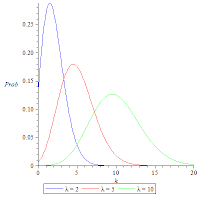| Johannes Diderik van der Waals (1837-1923) |
Van der Waals was born in Leyden, the Netherlands, in 1837 and became a schoolteacher. He did not know Latin or Greek, and thus was prohibited from taking academic examinations and going to a university. How times have changed! He could still attended classes at Leyden University, however, and he earned teaching certificates in math and physics. When the laws requiring classical languages were changed, Van der Waals sat for examinations and in 1873 earned his doctorate at the age of 36 with a thesis entitled "Over de Continuiteit van den Gas en Vloeistoftoestand" (On the Continuity of the Gas and Liquid State). Four years later, he became the first professor of physics at the University of Amsterdam.
Here, I think, it is important to realize what Van der Waals contribution actually was and what the other discoveries of his day were. Rudolf Clausius (1822-1888) had suggested that heat is a measure of motion only in 1850, and published his first work on entropy in 1865. His work also relied on the Maxwell-Boltzmann distribution, which was developed in the mid-19th century by James Clerk Maxwell (1831-1879) and Ludwig Boltzmann (1844-1906). Van der Waals tried to explain the phenomenon of a "critical temperature" for gases, and determined that it was due to the fact that atoms and molecules have a finite size and interact with each other, both facts that are ignored in the ideal gas law. After this, he developed the Law of Corresponding States, which provided the theoretical background for the experiments leading to the liquefaction of hydrogen and helium in 1898 and 1908 respectively.
Even with his later work, much of what Van der Waals is known for was in or came directly from his doctoral thesis. So to all of you graduate students out there, you may be working on Nobel Prize winning material!
If you are interested in a better understanding of Van der Waals work, his Nobel Prize acceptance speech is a good summary of his work and also of his interactions with other scientists: Van der Waals Nobel Lecture.
For more information about Van der Waals, I would highly recommend the resources provided on the Nobel Prize website, which has been the main source of information for this post: J. D. van der Waals.


